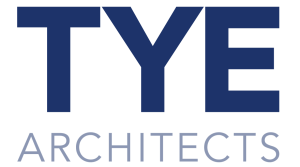Here at Tye Architects, we understand the importance of clear communication with our clients.
It enables us to fully understand our clients’ requirements and, as a result, to deliver exactly what they’d envisaged. As part of this commitment to clear communication, we have decided to outline our processes.
We co-ordinate everything from start to finish, acting as our clients’ single point of contact throughout any project’s development. That not only gives our clients clarity and peace of mind, but it also ensures we control as much as possible and can drive our projects forward.
The RIBA Plan of Work
In 2020, the RIBA (Royal Institute of British Architects) Plan of Work was revised to include eight stages, numbered 0-7. Together, these stages form a framework for design and construction and, while it would be impossible for every project to follow the steps to the letter, the stages allow our clients an insight into how our projects are likely to progress.
We have taken some time to explain each stage below, and hope that our explanations can help you to gain a deeper understanding of the way we operate here at Tye Architects.
-
Strategic Definition
Before anything else happens, we need to understand exactly what you’re looking for. We need to discuss your specific requirements and ensure we’ve got an appreciation of what you’re hoping for from the project.
According to RIBA’s Plan of Work, ‘Stage 0 … focuses on making the right strategic decisions and capturing them in a Business Case… considering the pros and cons, Project Risks and Project Budget for a range of options and, where necessary, carrying out Site Surveys…’
The execution of Stage 0 is simple: we talk to you!
-
Preparation and Briefing
During Stage 1, we brief the architectural team to make sure the initial designs and concepts are going to reflect our discussions with you. This part of the process is crucial; before we are able to progress to the actual design, it is of paramount importance that we create a truly comprehensive brief that covers all aspects of the project.
In RIBA’s own words, Stage 2 is all about ‘the information that the design team will need to commence the design process at Stage 2… illustrative masterplan visions might be prepared in order to determine and shape the brief...’
-
Concept Design
Following the site assessment, we use this information to begin the conceptual design phase. This stage – an enjoyable one for everyone involved – is all about translating your vision into clear, tangible concepts.
Collaborative workshops and design sessions ensure that you have an opportunity to actively contribute to the evolution of the design, giving us the best chance of delivering exactly what you’ve envisaged.
-
Spatial Coordination
At this stage, the design evolves from a concept into something more practical. We create the initial plans and physical models of your project, to ensure our design is practical as a physical concept. Here, our conceptual design is scrutinised in a real-world setting, factoring in the room and space required to bring it to life.
Stage three is also defined by planning submissions, where statements around a design’s concept and its key information are sent for approval. Sometimes, pre-application meetings with planners will be required, as will co-ordination with consultants. All of these processes typically take place during this stage, and are essential to the smooth running of any project.
-
Technical Design
No previous stage requires as much detail or time as Stage 4, as we work to ensure the project can be accurately tendered, costed and then built.
Every aspect of the proposed design is scrutinised as we work alongside the design team to make sure every detail is spot on. The entire design is effectively mapped out, with all measurements and quantities clearly set out for the next stage.
-
Manufacturing Construction
During Stage 5, the project comes to life. Once the design is completed, our team shifts its focus to project coordination and construction.
We draw on our network of skilled contractors and craftsmen to execute the design and make it a reality. This phase demands expert project management to ensure that the construction process stays on track, and truly reflects the approved design while keeping the quality as high as you’d expect.
-
Handover
Once the construction of the project is complete, we will remain on hand for you and make any small issues that arise our responsibility. We would also love to get your feedback; we want to hear about your experiences both of the project itself and of your new home.
This stage also sees a number of responsibilities passed from us to you. The legalities of the entire process will be made clear to you from the outset, so don’t fret, but the key responsibilities involved at Stage 6 are primarily focused on the environment and surrounding landscape.
-
Use
A self-explanatory final stage, but a very important one nonetheless. As we’ve already said, we will stay in contact with you once your project has become a reality, and continue to assess the process once it has been completed.
When you work with Tye Architects, you can rely on us overseeing each of these stages to the highest possible standards.

